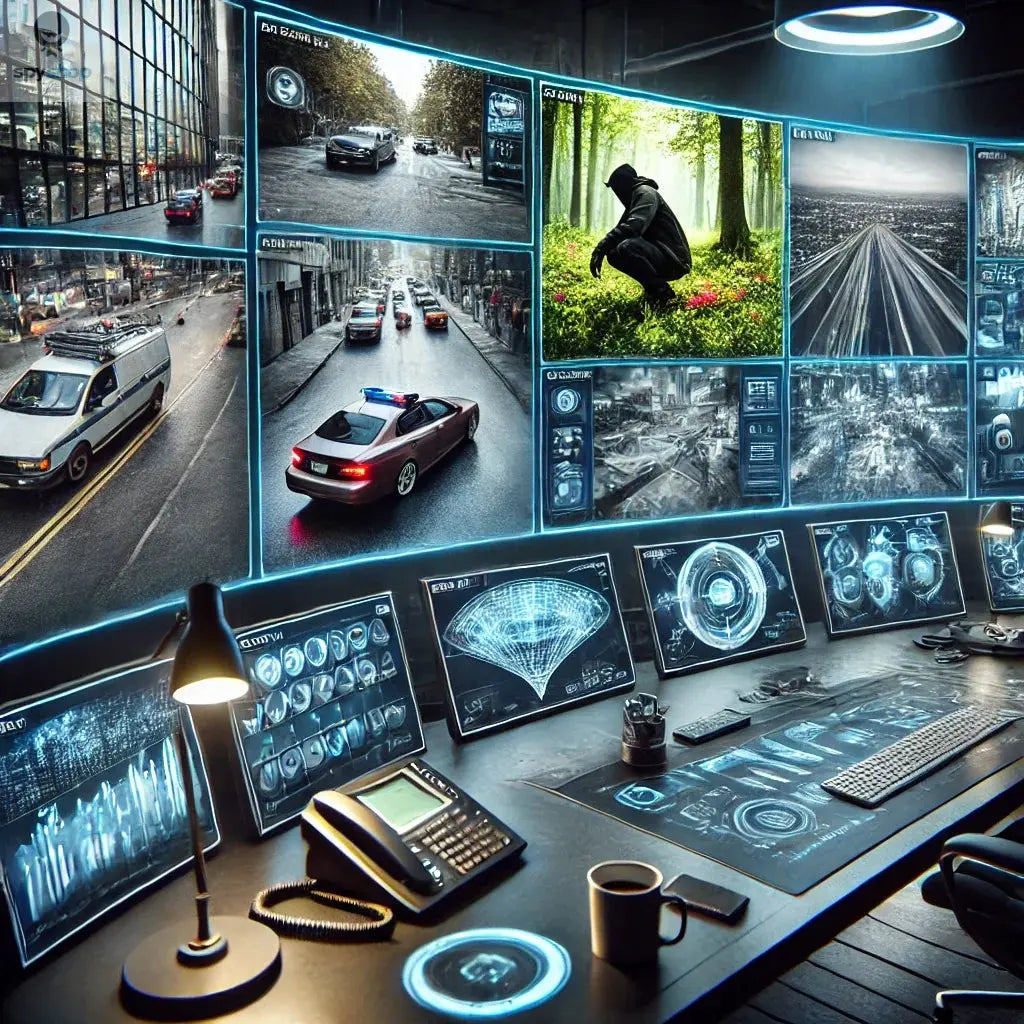
The Timeless Art of Espionage: Evolution of Spy Technology
Man dressed as a detective in a trench coat and hat, holding a magnifying glass and a pipe.
Tags: Spy Tools, Espionage History, Intelligence Gathering, Covert Operations, Spy Gadgets
Espionage is an ancient craft rooted in human ingenuity and the quest for power. Throughout history, nations, organizations, and individuals have employed covert tools and tactics to gain an edge over adversaries. The evolution of spy gear, from rudimentary methods to cutting-edge technology, showcases human creativity in adapting to changing times.
This article delves deep into the fascinating journey of espionage tools, offering a comprehensive look at their transformation over centuries.
The Genesis of Espionage: Ancient Methods of Covert Operations
Espionage can be traced back to ancient civilizations such as Egypt, China, and Rome. These societies understood the importance of gathering intelligence to outmaneuver rivals. While the tools of the time were rudimentary, they were effective in the context of their era.
-
Early Innovations:
- The Chinese Sun Tzu, in The Art of War, advocated for espionage as a key element in warfare, emphasizing the use of agents and intelligence networks.
- Ancient Egyptians used spies to uncover military and political plans, while the Romans developed intricate systems for courier interception.
-
Invisible Messages:
- Ancient Greeks employed messages etched onto wax tablets, later covered with new wax layers to conceal the writing.
- Carrier pigeons were an early form of secure communication, transporting secret messages across vast distances.
The Birth of Modern Spycraft: Espionage During World Wars
The industrial revolution and subsequent global conflicts ushered in a new era of espionage. During World War I, rudimentary tools gave way to more innovative techniques, blending technology with stealth.
-
World War I:
- Invisible Ink: Agents communicated through hidden messages that only became visible under heat or specific chemical exposure.
- Hollow Coins: Used to conceal microfilm, these coins could be unscrewed to reveal hidden compartments.
-
World War II:
- The British MI9 developed a compass disguised as a button and maps printed on silk to aid escape efforts.
- The U.S. Office of Strategic Services (OSS) created groundbreaking gadgets like matchbox cameras, cigarette-case microphones, and even exploding rats to sabotage enemy operations.
The Cold War: A Golden Age for Spy Gadgets
The Cold War, characterized by its ideological and geopolitical rivalries, saw unparalleled innovation in espionage tools. It was a time of shadows, secrets, and the race for technological supremacy.
-
Listening Devices:
- The Soviets introduced The Thing, a passive listening device embedded in a U.S. embassy seal. Activated remotely, it represented a marvel of its time.
- Tiny microphones were hidden in everyday objects like pens, shoes, and even cufflinks.
-
Concealed Cameras:
- Miniaturized cameras capable of capturing high-resolution images were developed, often concealed in ties, watches, or cigarette packs.
-
Cryptographic Machines:
- Devices like the Enigma Machine revolutionized secure communication, while the Allied efforts to crack it highlighted the strategic importance of codebreaking.
Digital Revolution: The Dawn of Cyber Espionage
The late 20th century saw a seismic shift with the advent of computers and the internet. Physical espionage tools began to share the stage with digital methods.
-
Cyber Tools:
- Hackers became the new spies, using malware, phishing, and ransomware to infiltrate systems and exfiltrate sensitive information.
- Governments invested heavily in developing cyber defense and offense mechanisms, resulting in sophisticated software tools like Stuxnet.
-
Miniaturized Devices:
- Spy cameras and recording devices became smaller and more efficient, embedded in inconspicuous items like key fobs, USB drives, and eyeglasses.
Spycraft in the 21st Century: The Age of AI and Quantum Computing
Modern spy gear reflects the rapid advancements in technology, blurring the lines between science fiction and reality.
-
Artificial Intelligence (AI):
- AI algorithms analyze vast amounts of data to identify patterns and predict behavior.
- Deepfake technology, though controversial, has become a tool for disinformation campaigns.
-
Quantum Encryption:
- Offering near-impenetrable security, quantum encryption is becoming the gold standard for safeguarding communications.
- Quantum computers have the potential to crack traditional encryption, revolutionizing the field.
-
Wearable Tech:
- Devices like smartwatches and fitness trackers now double as spy gadgets, capable of recording audio, video, and tracking locations.
Spy Gadgets of the Future
The future of espionage will likely integrate technologies such as neural interfaces, augmented reality, and biohacking. We might see spy gear capable of:
- Neural Monitoring: Reading thoughts or emotions for enhanced interrogation.
- Augmented Reality Surveillance: Glasses that overlay live data onto physical environments.
- Autonomous Drones: Small, insect-sized devices capable of infiltrating secure locations.
Ethics and the Dark Side of Spycraft
As spy gear becomes more advanced, ethical considerations loom large. The same tools used for national security can be weaponized for surveillance and oppression. Balancing innovation with accountability is crucial to ensure these technologies benefit society without infringing on privacy rights.
Conclusion: A Timeless Game of Shadows
The evolution of spy gear is a testament to human ingenuity, adapting to ever-changing challenges in the quest for information. From ancient techniques like invisible ink to modern AI-driven surveillance, espionage continues to evolve at an astonishing pace.
As we look to the future, the tools of espionage will likely become even more integrated into everyday life, raising questions about privacy, security, and ethics. Whether for national security or personal curiosity, spy gear remains a fascinating intersection of technology and intrigue, capturing our imaginations and shaping our world.


